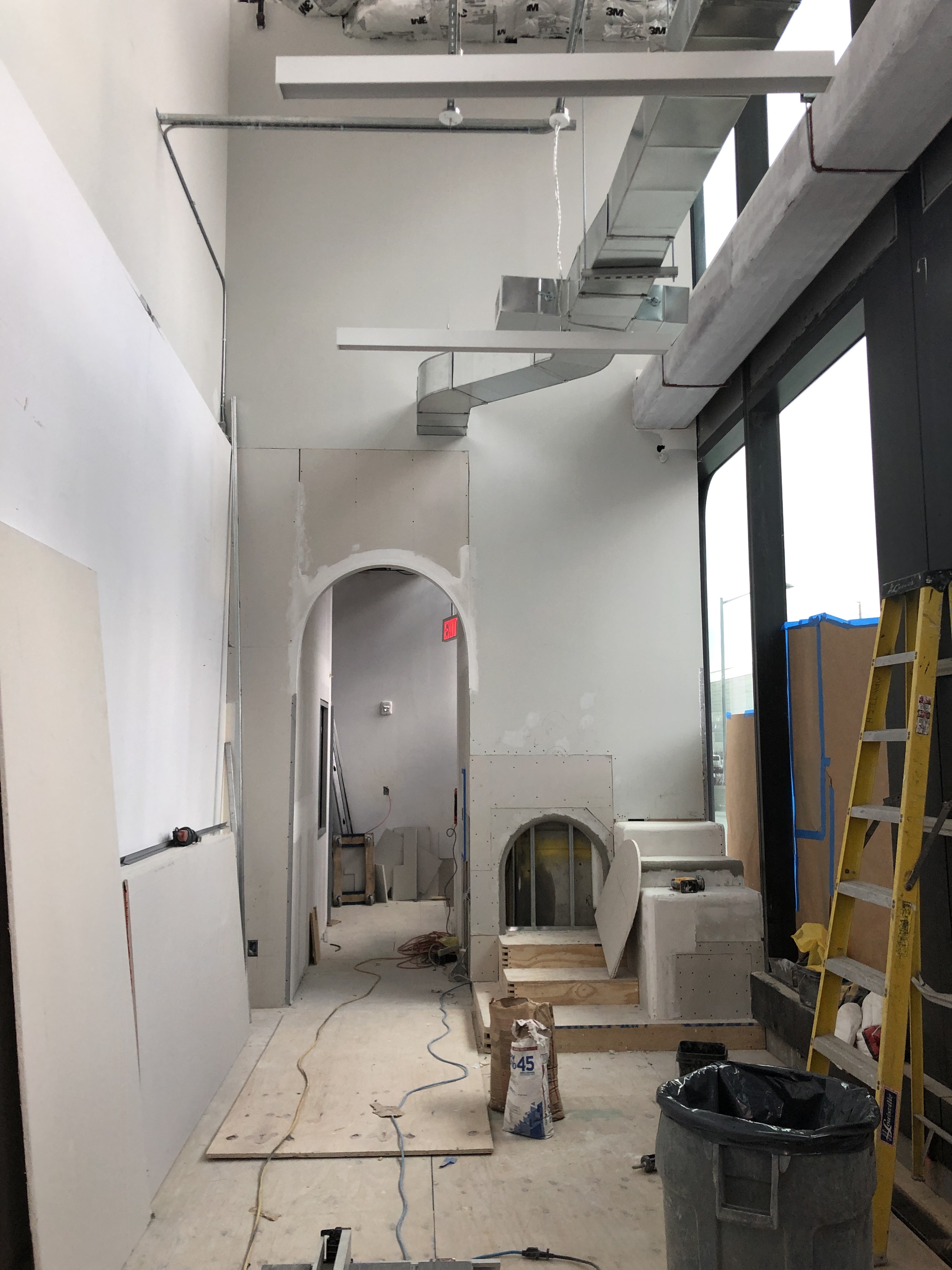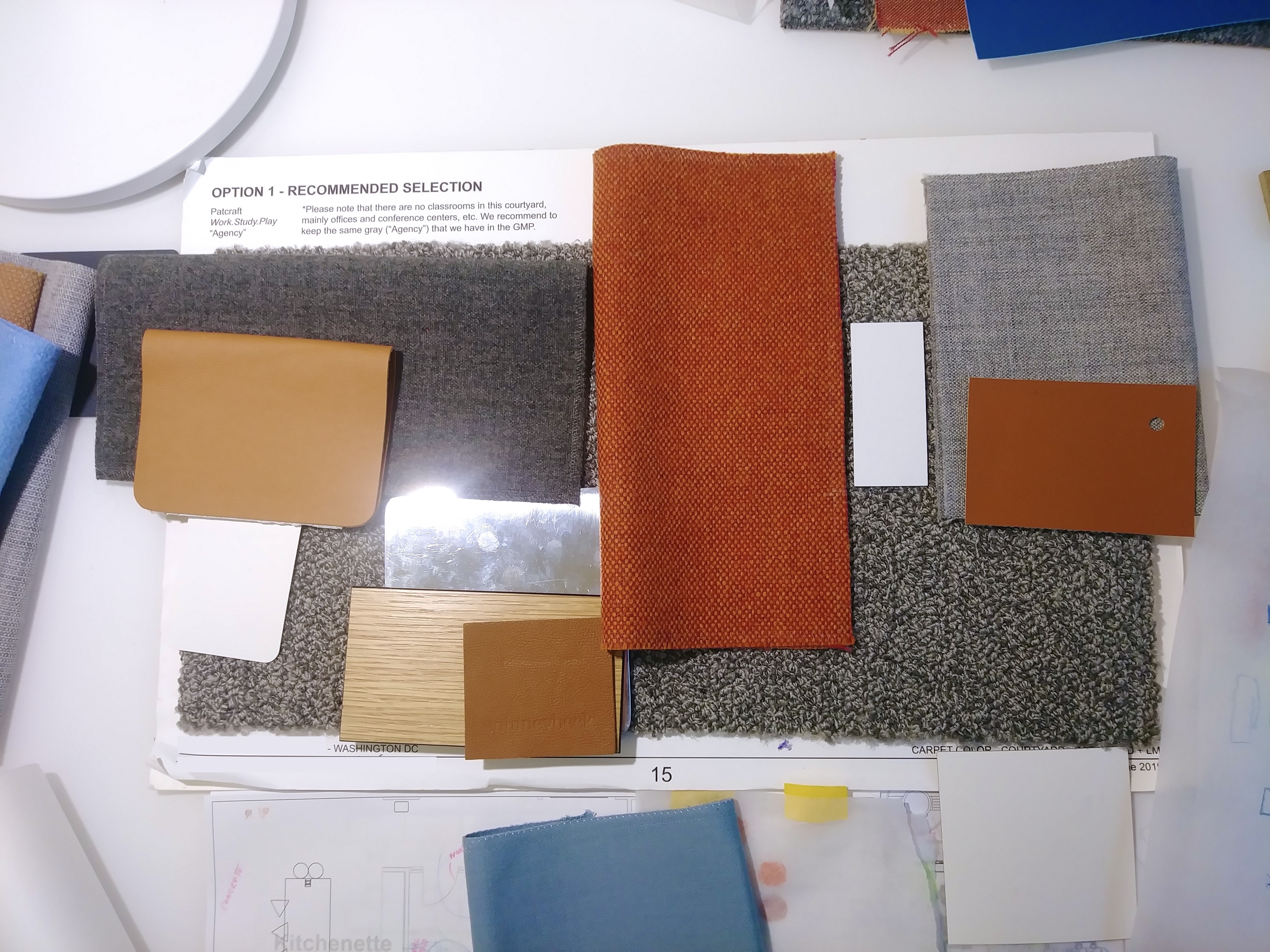Exterior of Early Learning Child Care Center at Hudson Yards, NYC.
Early Learning
Childcare Center
Project Description
Preliminary Stages
PROJECT DESCRIPTION
In my time as a Junior Designer at Eleven of Eleven Architecture, this daycare was one of the major projects I worked on.
The client was an innovative childcare and early learning program that focuses its curriculum on learning through play and exploration. We were tasked to design and administer the construction of the client's new Hudson Yards campus. Situated in one of the major hubs of NYC, the project's site was a key factor in order to provide utmost flexibility to working parents, as per the client's business motto. We worked off of the company's branding guidelines and used the daycare's flagship location in Tribeca as a design precedent while taking into account the unique conditions of the project's site.
To be updated.

Sample of Measurements from Initial Site Visits
PRELIMINARY STAGES
During pre-design, I was responsible for acquiring measurements and documenting specific site conditions. This was crucial to get a feel and understanding of the space as well as demarcating areas of concern that would need to be addressed in later stages of the design.
Based on site measurements and given technical documents, I drafted the base floor plans in AutoCAD, keeping in mind where to fur out walls and locations of existing equipment. Once the base plan was drawn and approved, I used it to begin a 3D model in Sketchup, which would get revised with each design iteration and be used as a space planning tool. From that point on, the initial plans were drafted based on the programming needs for the daycare.
Alongside the technical aspects of the project, I worked with the team to create preliminary presentations with mood boards along with drawing from material palettes and color schemes from the first campus to maintain a coherent visual branding.
PROCESS
While the plans and Sketchup model were being continuously updated with each design iteration, the actual site needed to be prepared properly, before any construction for the new design was to be started. Prior to the client's acquiring of the location, the space was temporarily being used to store food and supplies for the COVID-related purposes. Once those items were removed and we revisited the space, we noticed a few issues that needed to be addressed quickly.
The first was the varying levels of the existing concrete floor. A minimal, level finished floor throughout the daycare was ideal vision, especially as there would be infants and toddlers barefoot in the space. The good news was that all the various floor levels were much lower than the entrance, so we were able to raise it accordingly. Furthermore, the generous existing height of the space allowed for the raised floor level to feel more comfortable scale for the user as well as to create one seamless finish floor level for the children while ensuring ADA accessibility at each entrance / exit.
Other work within this scope of preparation included ensuring that drainage was properly pitched per the code and functional, fireproofing exposed pipes and ducts, and removing any unnecessary protrusions from any surfaces. Once the existing space was prepped into a blank canvas, installation of the steel framing began.
Snippet 1:
Main Corridor at
different phases



PROCESS (cont.)
Within the next few weeks, the main structure (i.e. steel studs) was put in place and the daycare was beginning to take form. My next task was to walk through the space to confirm that all the electrical, plumbing were installed per the drawings and to coordinate any necessary changes. Once our team gave the green light, the drywall was next put in soon followed by the millwork, electrical and plumbing fixtures, and finally the furniture. Throughout the project, it was my responsibility to maintain and update the drawing set with revisions (construction and furniture) and produce any necessary drawings / deliverables for the daycare based on changes per meetings and to memorialize any decisions made on site.
As the construction was underway, we continued coordinating communication between the developer / landlord, the client, consultants and the contractors (MEP, HVAC, AV equipment) to make sure we stayed on schedule and met the client’s needs. There were naturally a few changes made per the client's requests along the way. All this meant keeping track of the changes along with overall progress via submittals and information requests on Procore. Along with this were weekly visits to the site to compile a punchlist and update it. With steady progress and a meticulous team, the Hudson Yards campus opened its doors in the Fall of 2021.
Below are two particular spaces in the daycare at three different phases of construction during the project. You can see the gradual transformation of a murky, uncladded industrious space to a bright, warm and kid-friendly haven.
Snippet 2:
Multipurpose Room at different phases




Existing space for Entry Area

Colored Elevation of Entry Area

Sketchup Model of Entry Area

Completed Entry Area w/ Signage

Hanging installation in typical classroom
CHALLENGES ALONG THE WAY
COVID-19
The most blatant event of impact was the sudden transition from being on site on the daily to suddenly working on the project remotely due to COVID-19. What would have seemed like a huge wrench thrown into the process and a communication nightmare became a lesson of resilience in the face of a global crisis. Our team quickly adapted and got into the rhythm of this 'new normal'. COVID instead had heavier implications on the timeline, in terms of getting all the moving pieces, procedures and products needed on site in a timely fashion before the school opened. There were expected delays on shipping and materials, but as architects, we did our due diligence to find local products with short leads times and set realistic expectations to ensure we met the client’s needs for their prospective day of opening.
Site Specific Conditions
As with any construction, we naturally came across certain site conditions that weren't ideal, but needed to be addressed. Resolving an issue with the existing building required coordinating with the building (the landlord or representative). Of the issues that came up along the way were leaks, unforeseen difficulty with doors remaining ajar due to heavy gusts of wind (we were situated right by the Hudson River) and coordinating security / access features was also added into the mix later in the process.
In regards to the design, one of the challenges we had was incorporating as much storage as feasible within the daycare (for strollers, staff's personal belongings, students' belongings, school materials and any supplementary needs). The result was finding clever ways to tuck in storage space into the millwork, be it in the bleachers at the lobby, built into the walls, or installed on surfaces.
Decorative ceiling installations
One of the final design elements the client wanted in the space were hanging decorative installations, which would use the ceiling plane as yet another surface to engage the children. Technical drawings and on site measurements / conjectures were utilized to best coordinate hanging the elements without compromising the overall design intent and ensuring not to block any sprinklers or points of access. The installations effectively 'lowered' the ceiling plane to make the classrooms more scale-friendly to the little ones.
Brand signage
Of all the projects I worked on, this was the first where we were given the branding and illustrations that would be replicated and installed at the remaining campuses. The drawings needed to be fabricated into printable, buildable and replicable parts to be utilized at all campuses. After rounds of drawing and prototyping with our team, we finally actualized the vision and produced a full set of cute, yet functional signage that were installed in the most practical and visible areas. This signage is used as the precedent for the client's new campuses as the daycare expands it locations.
TAKEAWAY
Working on this daycare was an invaluable experience because it was project I was on board for and actively involved in from its conception to its completion. To see months worth of client and consultant meetings, design iterations, coordination and supervising construction culminate into a space enlivened by its little users was truly rewarding.
Through this project, I experienced an architect's heavy responsibility to coordinate, oversee and guarantee that all the moving parts were in sync and working toward successfully achieving the end goal. Furthermore, I was able to become familiar with NYC’s zoning and building code on a firsthand basis.
COVID ended up being a teacher to us, opening the hidden potentials of working remotely and highlighting the value of communication through means of technology when adapting to unforeseen circumstances.















